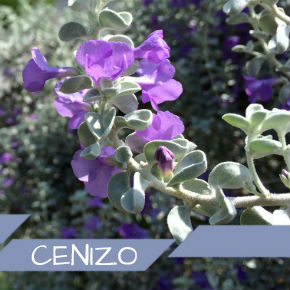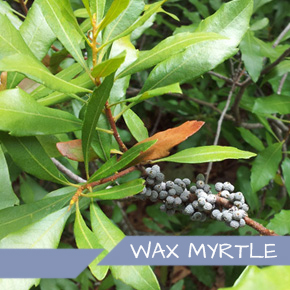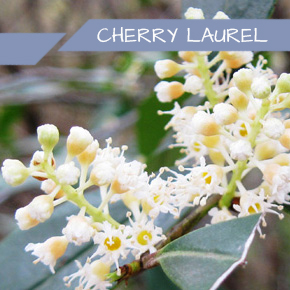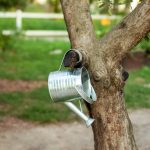Check out our list of a dozen delightful native screens and hedges for your perimeter planting pleasure.
San Antonio is at the extreme endpoint of so many eco-regions — the Texas Hill Country, South Texas plains, Blackland Prairie and Post Oak Savannah. So, there’s no shortage of native plant options and plenty of niches and micro-climates for them.
But in terms of big landscape shrubs it can be tricky to choose native substitutes for the big box-store evergreens that populate so many property lines in new suburbs.
With this in mind, here’s a guide to native screens and hedge-like plants that retain their leaves in winter. A bonus: most are already easily available in the horticultural industry.
Cenizo
Cenizo (Texas sage) is the ultimate South Texas shrub: it basks in summer sun with or without water and tolerates hedge shears to boot. Among the most drought-tolerant of all big landscape shrubs, it makes a standard by which others can be measured. Humidity and rain will bring storms of pink flowers into cenizo’s branches, earning it the nickname “barometer bush.”
Texas mountain laurel
Texas mountain laurel is a sentimental favorite, with mind-boggling purple flowers every year in time for Texas Independence Day. Mountain laurel is right at home in Hill Country rock. It’s usually grown as a single tree, but in Laurel Heights and older neighborhoods you’ll see it sculpted into hedgerows. Left on its own to reseed, it forms thicket-like masses of lustrous dark green.
Yaupon holly
Yaupon holly’s red Christmas berries are ubiquitous in irrigated residential and commercial landscapes across the North Side, since yaupon can be endlessly sheared, topiaried or trained up as an ornamental tree. In the wild it’s native from East Texas all the way to Bastrop, so it doesn’t mind growing in clay, but it does prefer moisture over rock.
Wax myrtle
A fast-growing coastal shrub, wax myrtle grows in clay loam or sandy soils (like those of southeastern Bexar County from Highlands all the way to Floresville.) It makes an “instant hedge” and a native alternative to photinia and ligustrum.
Ashe juniper
The scent of Ashe juniper (mountain cedar) at night is synonymous with the Texas Hill Country, but strikes horror into the hearts of allergy sufferers. Remember though, it’s only the male plants that release pollen. Instead of cutting down all your cedars, keep an instant informal hedge by retaining a few females (just look for the blue berries.) Few landscape shrubs will ever be as well adapted as cedar to the harsh, hot, rocky conditions where it thrives. On its own in full sun, it grows as a large bush; pruning is seldom needed.
Dwarf yaupon holly
Another holly that deserves special mention, this one is a dwarf version that makes a low hedge of the “meatball” variety — similar to boxwood but with less pruning needed. Nursery specimens are invariably male (without the red berries). Like other native hollies, dwarf yaupons grow best in deeper soils.

Cherry laurel
A fragrant Southern shrub from the Big Thicket, wild cherry laurel smells like cherry, grows vigorously and reseeds freely. In San Antonio, as long as soils are deep enough, it does well as understory around pecans, sycamores and other massive trees. At the San Antonio Botanical Garden it forms an irrigation-free screen comparable to xylosma or ligustrum.
Evergreen sumac
Wildly overlooked and underplanted, evergreen sumac grows on its own throughout the rocky soils north of Loop 1604, but often gets cleared from new home sites. Too bad, because it’s an easy 6-foot shrub, with tart edible berries to boot. It does well in the same locations as Texas mountain laurel, but it grows quickly to full size with minimal care. Sometimes it’s easier to preserve existing plants than buy them, since they can be tricky to transplant without root disturbance.
Will Fleming yaupon holly
Will Fleming looks like a bolt-upright exclamation point in the landscape, but it’s really just a unique male variety of the classic Texas yaupon. It’s a substitute for Italian cypress, provided soils are deep enough.
Sotol
One of the most ornamental of all desert plants, sotol or “desert spoon” adds instant central-Texas flavor to any landscape. Planted along a fence line, the saw-toothed native green and silver species make an effective barrier that even deer may hesitate to cross.
Agarita
Agarita is signature Texas native (deer-proof and drought proof) that has been replaced by Chinese holly and leatherleaf mahonia in the suburban landscape. Pair with yucca, evergreen sumac or mountain laurel to restore Hill Country flourish to your homestead.
Prickly pear
It’s almost an insult to reserve a last-place mention for prickly pear, but few plants are as easy to grow. It makes a great evergreen filler for holes in any shrub row and can be grown anywhere in Texas if you’ve got gloves and boots.




